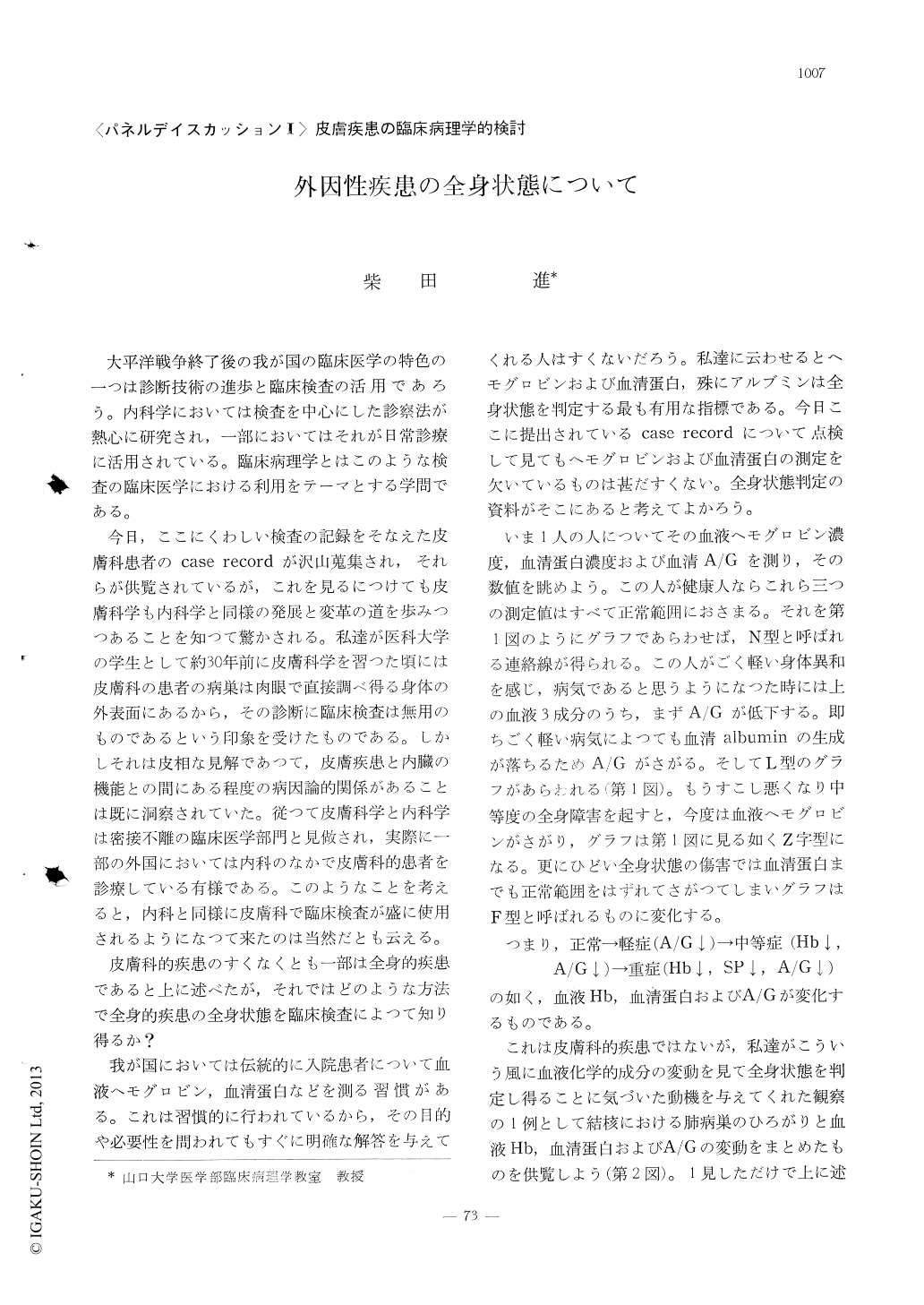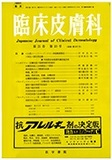Japanese
English
- 有料閲覧
- Abstract 文献概要
- 1ページ目 Look Inside
大平洋戦争終了後の我が国の臨床医学の特色の一つは診断技術の進歩と臨床検査の活用であろう。内科学においては検査を中心にした診察法が熱心に研究され,一部においてはそれが日常診療に活用されている。臨床病理学とはこのような検査の臨床医学における利用をテーマとする学問である。
今日,ここにくわしい検査の記録をそなえた皮膚科患者のcase recordが沢山蒐集され,それらが供覧されているが,これを見るにつけても皮膚科学も内科学と同様の発展と変革の道を歩みつつあることを知つて驚かされる。私達が医科大学の学生として約30年前に皮膚科学を習つた頃には皮膚科の患者の病巣は肉眼で直接調べ得る身体の外表面にあるから,その診断に臨床検査は無用のものであるという印象を受けたものである。しかしそれは皮相な見解であつて,皮膚疾患と内臓の機能との間にある程度の病因論的関係があることは既に洞察されていた。従つて皮膚科学と内科学は密接不離の臨床医学部門と見做され,実際に一部の外国においては内科のなかで皮膚科的患者を診療している有様である。このようなことを考えると,内科と同様に皮膚科で臨床検査が盛に使用されるようになつて来たのは当然だとも云える。
Some of the dermatoses are the skin manifestations of systemic diseases.
What kinds of laboratory tests can be applied for detection of systemic changes in dermatoses ?
The author recommended the following combination of some laboratory tests for this.
1) To know the systemic change caused by the skin disease, blood hemoglobin value, total protein level and A/G ratio of serum should be measured.
2) Results of hemoglobin value of blood, total protein level and A/G ratio of serum, determination for C-reactive protein, assay of serum protein fractions, and hematologic tests (white cell count and differential white cell count of capillary blood) may give some infor-mation in the allergic or inflammatory dermatoses.
3) In the dermatoses which give rise to decreased circulating blood or altered body fluid distribution, Hgb. and Hct. value of blood, total protein and A/G ratio, ion level, N.P.N. and urea-N. level of serum should be measured.

Copyright © 1967, Igaku-Shoin Ltd. All rights reserved.


